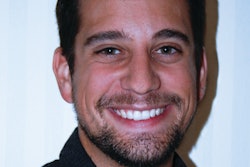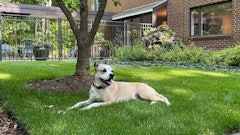Most dealers already offer a set price for a certain repair in the form of flat-rate pricing. Going beyond flat rate pricing, menu pricing incorporates the cost of parts needed for the repair and gives dealers a chance to increase profits while making the customer's buying decision a more comfortable one.
Calculating menu pricing
The first thing you have to do in order to put menu pricing together is determine what your labor pricing is. Most dealers have set standard labor pricing for their shop and are already doing some menu pricing on annual services or tune-ups.
Take your common repairs that you already know the pricing for and use that as your baseline for menu pricing. Then it's just a matter of figuring out what parts you are going to need.
The cost of the parts will vary based on their manufacturer. Most dealers do have a general idea as to what the average cost for a part will be. Take a look at parts from different brands.
You want to calculate the average price of parts from mid-range to the highest price. If a part comes in prices of $5, $7 and $10, take the average for the two higher numbers. You will come out with $8.50 instead of the $7.34 when considering all prices.
Take the average price for the parts and add it to the average time/labor price for completing the repair. You want to "beef up" your labor a little bit the same you did parts when menu pricing.
Take your average time for a repair and add 1/10 of an hour per every half hour of time. If its 7/10 of an hour, I might and 1.5/10 of an hour to that.
You are going to get burnt a little bit on those higher priced items, but for the most part you will come out better because the lowest prices for parts and service are not figured into the menu pricing option.
Presenting pricing to customers
Customers love being able to walk into a business and know what the price of something is. It makes them more comfortable to know not just the cost of labor, but also parts. When you say $40 plus parts, they want to know how much the parts are going to cost them.
Once menu pricing is all figured out, your final step will be to present the items in a formal manner like a three ring binder organized by equipment type. When a customer comes in asking about a repair, in a few page turns you can share some menu options.
Having a menu pricing book is also good because if the service counter is busy, anyone can turn the page and find the customer a price. Additionally, customers don’t fight you as much on price when it is written in black and white and not just given off the top of your head.
In deciding what items to include in menu pricing, you should sit down with your lead technician and a common piece of equipment. Talk about the common procedures for that piece of equipment and go over the time and labor required.
- Common things to include in your menu pricing binder are:
- Annual service on all equipment – labor, sharpening, oil, plugs
- Blade sharpening and replacement blades
- Deck belt replacement (labor and materials)
- Tire repair (labor and materials)
- Spindle replacements (labor and materials)
Some dealers will worry that offering menu pricing will lock them into one situation. It doesn’t really pigeon hole you, but rather gives you a starting point.
I like to compare it to McDonald's menu pricing. You walk in and see different menu-priced option on the board, but it is easy to make changes to the options laid out for a small increase in price. I could have a milkshake instead of the medium soda, but it's going to cost me more money.
So when you do menu pricing you have to remember that menu pricing is a starting point for you. While most people that walk into McDonalds and order the number three value meal don’t change it at all, there are some that want it supersized. If the customer wants to make a variation you just add it on. Nine times out of ten you are going to make more money if you menu price.



















